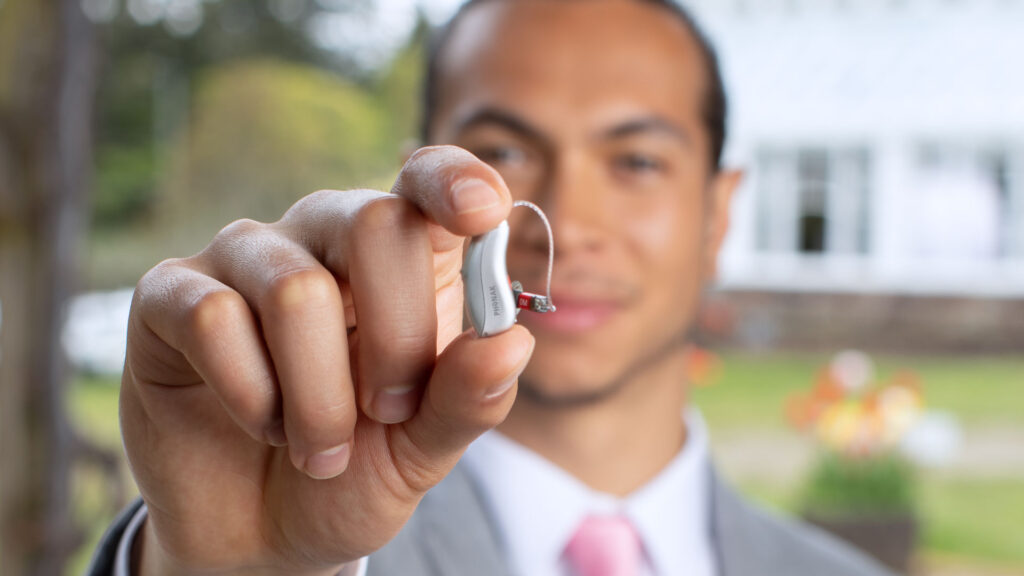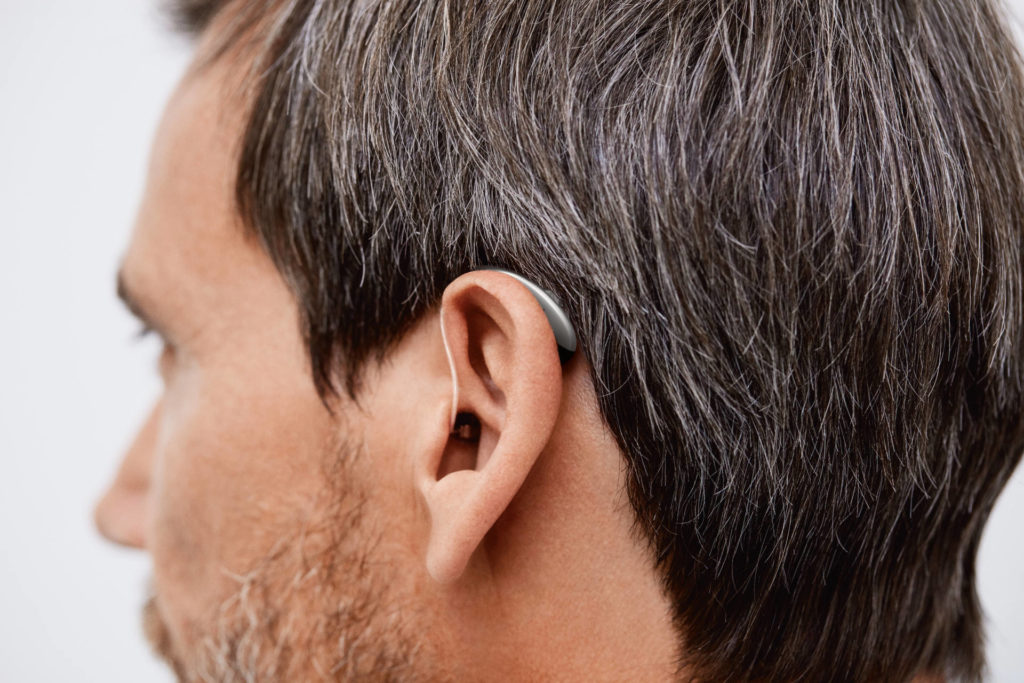At South East Hearing Care Centre, we understand that hearing health and the various services available can be a topic of curiosity and concern. Whether you have questions about hearing aids, microsuction, or any other aspect of hearing care, we’re here to help. Our team of experts is dedicated to ensuring that you receive the highest quality care and support for your hearing needs. So, let’s dive into some frequently asked questions and address any concerns you may have.
Table of Contents
What are hearing services?
At South East Hearing Care Centre, we take pride in offering an extensive range of top-notch hearing care services delivered by our team of expert audiologists. Our goal is to ensure that your hearing health is given the utmost attention and care it deserves.
One of the essential services we provide is wax removal, which can be done using two methods: microsuction and irrigation. Our skilled professionals utilise the latest techniques and equipment to safely and effectively remove excess wax, allowing you to experience improved hearing clarity.
To accurately assess your hearing abilities, we conduct comprehensive hearing tests. These tests help us identify any potential hearing loss or issues, enabling us to recommend suitable solutions tailored specifically to your needs. Our audiologists are highly trained and experienced in performing these tests, ensuring accurate results and personalised recommendations.
In addition to hearing tests, we offer a wide range of top-quality hearing aid devices. Our team understands that each person’s hearing needs are unique, and we strive to find the perfect hearing aid that suits your preferences and lifestyle. With advanced technology and innovative features, our hearing aids provide enhanced sound quality and improved communication.
At South East Hearing Care Centre, we also provide second opinions for those who may have received conflicting advice or are unsure about their current hearing health. Our knowledgeable audiologists will carefully evaluate your situation and provide you with an unbiased and thorough assessment, allowing you to make informed decisions about your hearing care.
We understand the importance of protecting your ears from potential harm. That’s why we offer ear protection solutions in the form of mouldable ear plugs. These custom-fit earplugs provide a comfortable and effective barrier against loud noises, ensuring your ears are safeguarded in noisy environments.
Our friendly and professional team is committed to providing exceptional hearing care services that prioritise your well-being. We combine our expertise with a caring approach to ensure you receive the best possible care and attention throughout your hearing journey.
Don’t let hearing issues hinder your quality of life. Visit South East Hearing Care Centre today and experience our comprehensive hearing care services that are designed to help you hear better and live better.
What are the different types of hearing aids available?
There are several different types of hearing aids available:
1. Behind-the-ear (BTE) hearing aids: These consist of a small plastic case worn behind the ear that connects to a custom-fit earmould or an earpiece that sits in the ear canal.
2. In-the-ear (ITE) hearing aids: These are custom-made devices that fill the outer portion of the ear. They come in different sizes, including full-shell, half-shell, and canal.
3. In-the-canal (ITC) and completely-in-the-canal (CIC) hearing aids: These are small devices that fit partially or completely into the ear canal, making them less visible. ITC and CIC hearing aids are custom-made based on the individual’s ear shape.
4. Receiver-in-the-canal (RIC) or receiver-in-the-ear (RITE) hearing aids: These have a behind-the-ear component that houses the microphone and processing technology, and a receiver (speaker) that sits in the ear canal. The two parts are connected by a thin wire.
5. Invisible-in-the-canal (IIC) hearing aids: These are the smallest custom-made hearing aids available, designed to fit deep inside the ear canal. They are almost invisible when worn.
It’s important to note that the availability of specific types of hearing aids may vary depending on your hearing loss, ear anatomy, and personal preferences. A consultation with one of our audiologists is necessary to determine the most suitable type of hearing aid for each individual.

Which hearing aid would you recommend?
We understand that choosing the right hearing aid can be a daunting task. It is important to consider your lifestyle, wants and needs when recommending a specific type of hearing aid. Here is an overview of the pros and cons of each type of hearing aid:
Completely In The Canal (CIC) Hearing Aids:
Pros: Virtually invisible, custom-fit, less wind noise, easy to use with phones.
Cons: Small size may make handling difficult, limited features, shorter battery life.
Behind-The-Ear (BTE) Hearing Aids:
Pros: Suitable for various types of hearing loss, powerful amplification, longer battery life, easy to handle.
Cons: More visible than other options, may pick up wind noise.
In the Canal (ITC) Hearing Aids:
Pros: Custom-fit, less visible than BTE, larger controls and batteries for easier handling.
Cons: May still be visible, can pick up wind noise.
Invisible In The Canal (IIC) Hearing Aids:
Pros: Completely invisible, custom-fit, natural sound quality.
Cons: May not be suitable for severe hearing loss, smaller battery size, more difficult to handle.
Receiver In The Ear (RITE) Hearing Aid:
Pros: Comfortable to wear, natural sound quality, suitable for various types of hearing loss.
Cons: Visible receiver unit, may require more maintenance.
When recommending a specific type of hearing aid, we believe it is crucial to assess your lifestyle, wants, and needs. Factors such as dexterity, cosmetic preferences, degree of hearing loss, and communication requirements should be considered.
For a comprehensive guide on selecting the right hearing aid, read our detailed guide. It provides further information on each type of hearing aid and can help you make an informed decision. Remember, it is always best to consult with a qualified audiologist to ensure the best outcome for your specific situation.
If you have any further questions or would like to schedule a consultation, please do not hesitate to contact us. We are here to help you find the perfect hearing aid solution for your needs.

What is the best hearing aid for first-time users?
The best hearing aid for first-time hearing aid users depends on individual needs and preferences. However, some popular options for first-time users include:
1. Phonak Audeo Marvel: This hearing aid offers excellent sound quality, Bluetooth connectivity, and a rechargeable battery.
2. Oticon Opn S: Known for its advanced sound processing technology, this hearing aid provides clear sound and helps users understand conversations in noisy environments.
3. Signia Pure Nx: This hearing aid offers natural sound perception, advanced speech processing, and easy connectivity to smartphones and other devices.
4. ReSound LiNX Quattro: With a rechargeable battery, excellent sound quality, and direct streaming capabilities, this hearing aid is popular among first-time users.
5. Widex EVOKE: This hearing aid adapts to the user’s preferences and environment, providing personalised sound and easy control through a smartphone app.
However, we recommend speaking with an audiologist and working out what your personal needs are. If you’re an active person who needs a hearing aid that is more robust or long-lasting, we might recommend the Lyric hearing aid. If you need rechargeable hearing aids with Bluetooth connectivity, we might offer an alternative. Modern hearing aids work similarly and different brands prioritise different features, so it’s crucial to come in with an open mind and a clear understanding of what you’re looking for from a hearing aid. Take a look at our hearing aid guide to learn more.
Are hearing aids beneficial?
Yes, hearing aids are beneficial for individuals with hearing loss. They can greatly improve communication and quality of life by amplifying sounds and making speech more clear and understandable.
Hearing aids help individuals participate in conversations, enjoy music and other sounds, and remain socially engaged. They also reduce the strain and fatigue that can result from struggling to hear and understand speech.
Overall, hearing aids can significantly improve a person’s ability to hear and communicate effectively in various situations.
How to adjust hearing aids that sit behind the ear?
Adjusting hearing aids that sit behind the ear typically involves the following steps:
1. Familiarise yourself with the controls: Behind-the-ear (BTE) hearing aids usually have buttons, dials, or switches that allow you to adjust the volume and program settings. Locate these controls on your device and understand how they work.
2. Start with a low volume: Begin by setting the volume to its lowest level. Slowly increase it until you reach a comfortable hearing level. This gradual adjustment helps you avoid sudden loud sounds that may be uncomfortable.
3. Use the correct program: Many BTE hearing aids have different programs or settings for different listening environments, such as quiet, noisy, or outdoors. Make sure you select the appropriate program for your current situation to enhance your hearing experience.
4. Experiment with different settings: If your hearing aid has additional settings for things like noise reduction or directional microphones, try adjusting them to find the settings that work best for you. Every individual’s hearing needs are unique, so it might require some trial and error.
5. Seek professional assistance if needed: If you’re having difficulty adjusting your hearing aids or not achieving satisfactory results, consult with your audiologist. We can provide personalised guidance, make necessary adjustments, or recommend any changes to optimise your device’s performance.
Remember, the specific adjustments required may vary depending on the make, model, and features of your behind-the-ear hearing aid, so it’s always a good idea to refer to the manufacturer’s instructions or contact us when in doubt.

Does wearing hearing aids accelerate hearing loss?
No, wearing hearing aids does not accelerate hearing loss. In fact, hearing aids can help slow down the progression of hearing loss by amplifying sounds and improving the overall hearing ability. Hearing aids are designed to compensate for hearing loss and provide appropriate amplification to help people hear and communicate better. It is important to consult with a healthcare professional or audiologist to determine the appropriate hearing aid settings and usage to ensure optimal hearing health.
How to get my partner to get a hearing aid?
Getting your partner to consider using a hearing aid may require open and honest communication, understanding, and empathy. Here are some steps you can take to encourage them:
1. Educate yourself: Learn about hearing loss, its impact on people and relationships, and the benefits of hearing aids. Understanding the subject will help you approach the conversation more effectively. Take a look at our resources.
2. Choose the right time and place: Find a quiet and comfortable environment where you can have an uninterrupted conversation. Timing is crucial, so ensure your partner is relaxed and receptive.
3. Express your concerns: Share your observations about their hearing difficulties and how it affects your communication and relationship. Be specific about instances where misunderstandings or frustration occurred due to their hearing loss.
4. Use “I” statements: Instead of blaming or accusing, focus on expressing your feelings using “I” statements. For example, say, “I feel frustrated when we cannot have a proper conversation because I have to repeat myself constantly.”
5. Share the benefits: Discuss the potential benefits of using hearing aids, such as improved communication, enhanced quality of life, and better overall health. Explain how hearing loss can lead to social isolation and cognitive decline if left untreated.
6. Offer support: Reassure your partner that you are there to support them throughout the process. Offer to accompany them to appointments, help with research, or even share the cost if necessary.
7. Encourage a hearing evaluation: Suggest having a hearing evaluation conducted by a professional audiologist. Offer to help find a reputable clinic and make the appointment together. We book longer appointments especially if we know you’re nervous, so please let us know when you book. You have no commitment when you have an appointment and we offer a 4-step care plan to ensure you and your partner are comfortable with the process.
8. Share success stories: Find stories of people who have experienced positive changes after using hearing aids. These anecdotes can serve as inspiration and show that wearing hearing aids is not a sign of weakness or old age. Take a look at our reviews!
9. Be patient and understanding: Understand that your partner may need time to come to terms with their hearing loss and the idea of using hearing aids. Be patient, supportive, and avoid pressuring them.
10. Offer alternatives: If your partner remains hesitant about using hearing aids, explore alternative assistive listening devices such as personal sound amplifiers or TV listening systems. These may serve as a stepping stone before considering hearing aids.
Remember, the decision to wear a hearing aid ultimately lies with your partner. Offer support, understanding, and patience throughout the process.
What should I do if my hearing aid got wet?
If your hearing aid gets wet, here are some steps you can take:
1. Remove the hearing aid from your ear: Take it out of your ear immediately to prevent any further damage.
2. Turn it off: If your hearing aid has an on/off switch or a battery compartment, switch it off or remove the hearing aid batteries. This will help prevent a short circuit.
3. Dry it gently: Use a soft cloth or tissue to carefully dry the hearing aid. Avoid using heat or blowing with a hairdryer, as excessive heat can damage the device.
4. Open the battery compartment: If your hearing aid has a removable battery compartment, open it to allow air circulation and aid in drying. You can also remove the hearing aid batteries if possible.
5. Use a hearing aid drying kit: If you have access to a hearing aid drying kit, such as a dehumidifier or an electronic drying box, place your hearing aid in it. These kits can help remove moisture effectively.
6. Avoid rice or silica gel packets: While rice or silica gel packets are commonly suggested for drying electronic devices, they may not be suitable for hearing aids. They can leave dust or debris inside the hearing aid, potentially causing further damage.
7. Wait for it to dry: Leave your hearing aid in a dry and ambient temperature environment to allow it to dry completely. This may take several hours or even up to a day.
8. Seek professional help if needed: If your hearing aid does not work properly after drying or if you notice any damage, contact your hearing healthcare professional or the manufacturer for assistance.
Remember, prevention is key, so it’s a good idea to invest in a protective cover or keep your hearing aid away from water sources to avoid future accidents.
Why do hearing aids cost so much?
Hearing aids can be expensive for several reasons:
1. Advanced technology: Hearing aids incorporate sophisticated technology to improve sound quality and speech understanding. They use digital signal processing, noise reduction algorithms, and directional microphones to enhance the listening experience. The development and integration of such advanced features require substantial research and development investment, which contributes to the high cost.
2. Customisation and fitting: Hearing aids need to be tailored to an individual’s specific hearing loss and ear anatomy. Audiologists spend time evaluating and fitting the devices to ensure optimal performance. This level of customisation adds to the overall cost.
3. Durability and reliability: Hearing aids are small, delicate electronic devices that need to withstand daily use and exposure to various environmental conditions. Manufacturers invest in durable materials, rigorous testing, and quality control to ensure the longevity and reliability of the devices, which increases their cost.
4. Professional services: The cost of hearing aids often includes the services provided by audiologists. These professionals conduct hearing assessments, recommend appropriate devices, perform fittings and adjustments, and provide ongoing support and maintenance. The expertise and time required for these services contribute to the overall cost.
It is important to note that technological advancements and economies of scale have led to a gradual decrease in hearing aid prices over the years. However, the initial investment required to obtain quality hearing aids can still be relatively high.
Contact Us
If you have any more questions or need further help, please contact us using the form below or calling us at 01403 218 863.
"*" indicates required fields